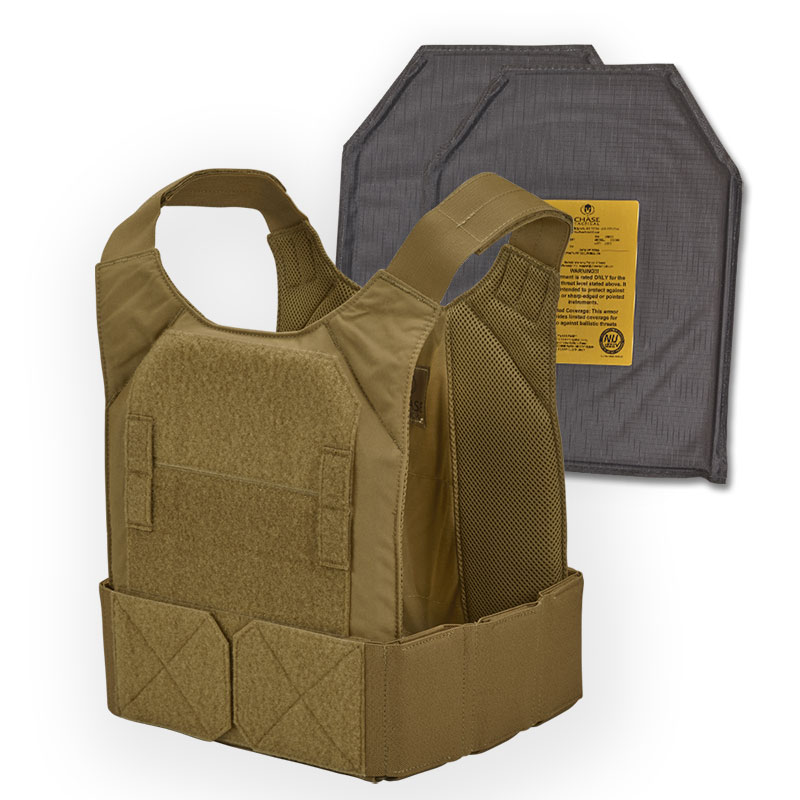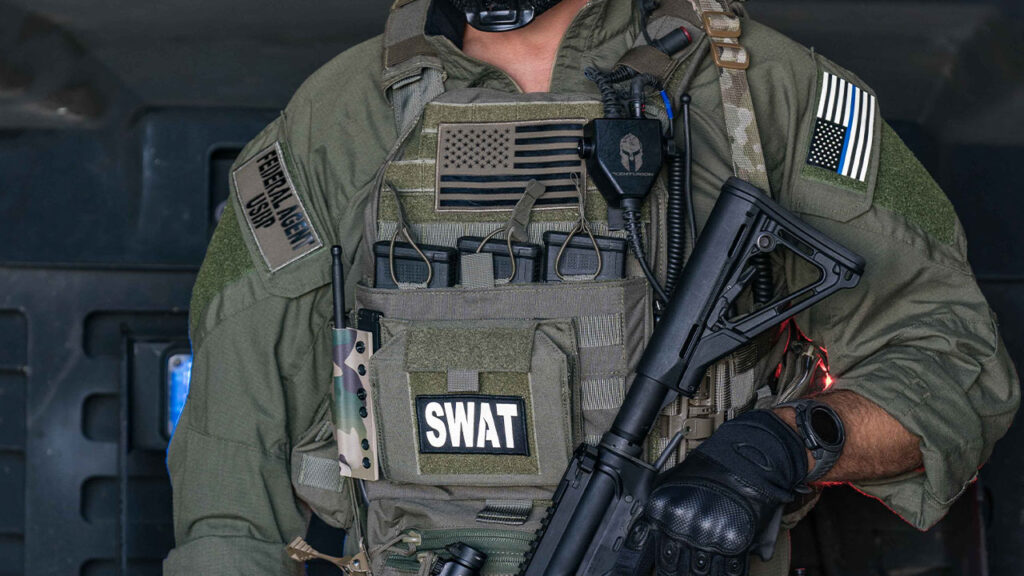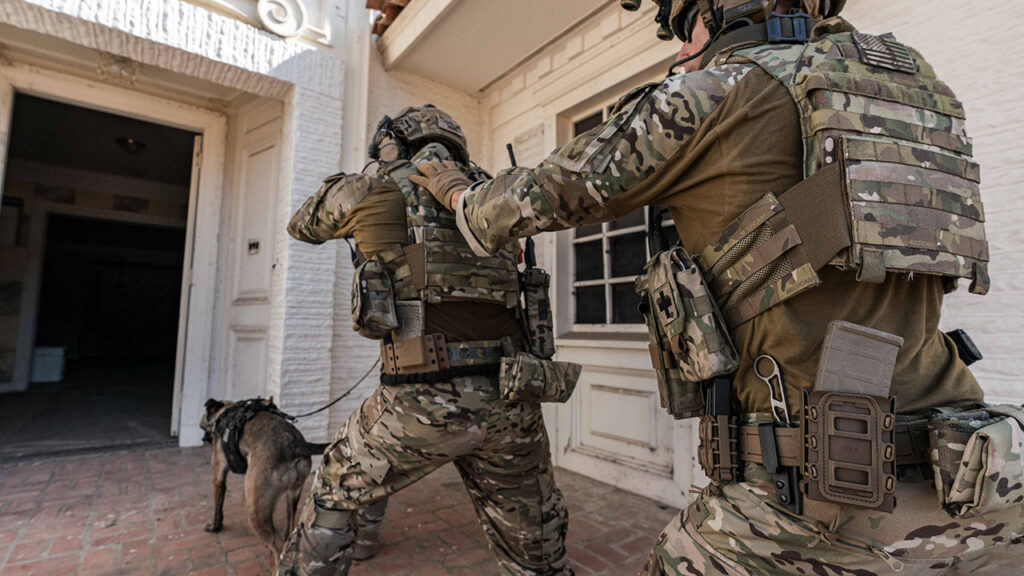Staying Protected: The Importance of Body Armor for Law Enforcement
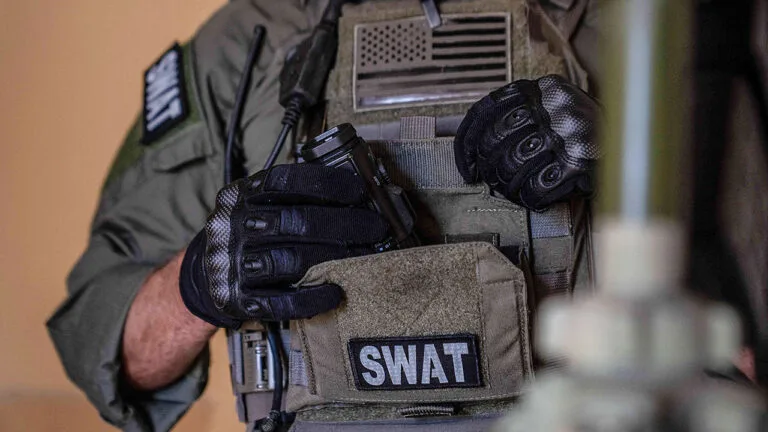
Table of Contents
Body armor for law enforcement has become an irreplaceable shield, safeguarding those who serve to protect us. The stark reality that firearms were responsible for 92% of officer fatalities in the line of duty between 1987 and 2015 underscores the crucial role of body armor in ensuring the safety of police officers.
Ballistic-resistant body armor, though not invulnerable, offers protection against numerous handgun and rifle ammunition types, providing a vital layer of security for law enforcement personnel.
In light of the significant threats faced by U.S. law enforcement officers, the evolution of body armor from rudimentary protective gear to advanced body armor vests is a testament to the ongoing commitment to officer safety.advanced armor plates and bulletproof vests
This article goes into the essential features of modern tactical body armor, its impact on law enforcement officer safety, and the challenges that lie ahead, reinforcing the importance of continued innovation and adaptation in protective gear for those on the front lines.
Gear up with trusted armor solutions — shop Chase Tactical’s full range of body armor now.
The Evolution of Body Armor
Body armor has evolved significantly from the metal suits of ancient warriors to the advanced tactical gear used by today’s law enforcement. From early examples, such as the Dendra panoply of ancient Greece and Roman segmented armor, to the full steel plate armor of medieval knights and the ō-yoroi of Japanese samurai, protection in combat has always been a priority across civilizations.
The modern era of body armor began with the introduction of firearms, which rendered traditional armor ineffective. Breakthroughs in materials science, particularly the development of ballistic nylon and Kevlar in the mid-20th century, revolutionized the design of protective gear. The National Institute of Justice (NIJ) played a key role by establishing standardized levels of ballistic resistance for law enforcement armor.
Today’s body armor is lighter, stronger, and more adaptable than ever, designed to meet the evolving threats posed by both handguns and rifles. With globally recognized NIJ standards and ongoing technological innovation, modern armor provides law enforcement officers with critical protection in increasingly dangerous environments.
Why Law Enforcement Needs Body Armor
Law enforcement officers face numerous dangers in their line of duty, making body armor an essential piece of equipment. Body armor provides critical protection against firearms, knives, and other threats, ensuring officers' safety and enhancing their ability to perform their duties effectively. This protective gear saves lives and instills confidence in officers, allowing them to respond more decisively in high-risk situations.
Enhancing Officer Safety
Body armor is vital for safeguarding officers from gunshots, stabbings, and other forms of assault. Law enforcement personnel often encounter violent scenarios where their lives are at risk. By wearing bullet-resistant vests, officers significantly reduce the chances of sustaining fatal injuries, thus ensuring they can continue protecting the public.
Boosting Morale and Confidence
When officers are equipped with reliable body armor, their confidence in handling dangerous situations increases. This psychological boost enables them to perform their duties more effectively, knowing they have a greater chance of surviving an attack. The presence of body armor can also deter potential assailants, reducing the likelihood of confrontations escalating to violence.
Public Trust and Professionalism
The use of body armor demonstrates a commitment to officer safety and professionalism. When the public sees officers wearing protective gear, it reinforces the perception that law enforcement is prepared and serious about maintaining safety. This visible dedication to officer well-being helps build trust between the community and the police force.
Operational Efficiency
Body armor allows officers to operate more efficiently in high-risk environments. With the assurance of added protection, officers can focus better on their tasks, make quicker decisions, and engage more effectively with threats. This improved operational capability ensures law enforcement can manage emergencies and maintain public order with greater success.
Compliance With Regulations
Modern body armor is designed to meet rigorous safety regulations, providing reliable protection against various threats. Law enforcement agencies invest in high-quality equipment to ensure their officers have the best possible defense. This compliance with safety regulations reflects the ongoing commitment to officer welfare and the continuous improvement of policing practices.
Key Features of Modern Body Armor
Modern body armor has evolved to meet the demands of today’s dynamic threats, offering advanced protection without sacrificing mobility. Below are the key features that make it essential for law enforcement, military, and civilian use.
Bullet and Stab Resistance
Modern body armor offers varied levels of protection to address different threats. Soft body armor, incorporating ballistic panels, is effective against handgun bullets due to materials like Kevlar, while tactical armor, combining soft and hard elements, can withstand rifle bullets. Additionally, stab-resistant armor is specifically designed to protect against attacks with knives and sharp objects, thanks to the integration of ballistic panels.
Advanced Materials and Standards
The evolution of body armor materials has significantly enhanced officer safety. The use of advanced fabrics and materials science has led to the development of lighter, more flexible armor that does not compromise on protection.
Compliance with test methods for ballistic resistance and NIJ Standard-0115.00 for stab resistance ensures that body armor meets rigorous safety criteria. NIJ Standard-0101.06 for ballistic resistance, and the NIJ Standard-0115.00 for stab resistance ensures that body armor meets rigorous safety criteria, adhering to minimum performance standards.
Design and Comfort
Modern body armor is not only functional but also designed with the wearer’s comfort in mind. Features such as moisture-wicking fabrics and ergonomic designs enhance wearability. Covert armor styles, or concealable armor, allow for discretion in undercover operations, resembling regular clothing to blend in seamlessly.
Customization and Upkeep
Body armor today can be custom-fitted to suit different body types and sizes, ensuring maximum protection and comfort. Regular maintenance and proper storage are crucial to preserve the protective properties of the armor, especially when it comes to concealable armor.
Technological Integration
Recent advancements include the integration of smart technologies in body armor. This includes wearable devices that monitor vital signs and threats in real-time, providing enhanced situational awareness and safety for law enforcement officers.
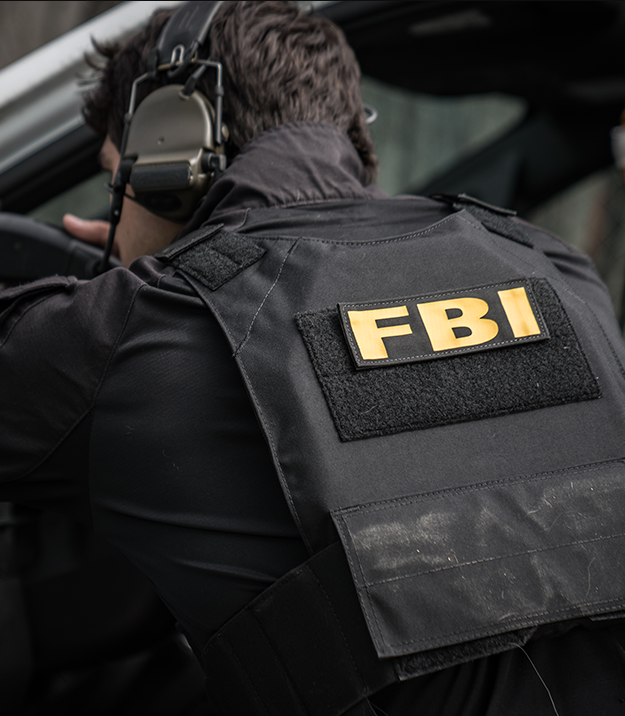
The Impact of Body Armor on Officer Safety
Low Vis Plate Carrier Elite (LVPC-E) Active Shooter Kit + Level IIIA Soft Armor
Chase Tactical has answered the call of Law Enforcement with their Low Vis Active Shooter Kit (LVPC-E) as a cost-effective solution for active shooter preparation and response. This kit provides protection against handgun rounds.
1. Broad Spectrum Protection
Body armor significantly enhances the safety and survivability of law enforcement officers across a variety of threats, not limited to ballistic encounters. Officers equipped with body armor, including ballistic panels, have a critical advantage during car crashes, physical altercations, falls, and other trauma-inducing incidents.
2. Reduction in Assault-Related Injuries
Statistically, the annual assault on approximately 60,000 law enforcement officers results in around 16,000 injuries. The deployment of soft body armor plays a pivotal role in either preventing these injuries or substantially reducing their severity, demonstrating its effectiveness beyond just ballistic protection.
3. Decreased Fatality Rates from Ballistic Threats
Research underscores the effectiveness of body armor, equipped with ballistic panels, in saving lives during ballistic threats. Officers wearing body armor experience a significant increase in survival rates.76% lower risk of fatal injury when shot in the torso compared to their unprotected counterparts.
4. Comparative Risk Analysis
The occupational hazards for law enforcement are starkly higher than many other professions. In 2007, the fatality rate for officers was about significantly higher, underscoring the risks they face daily. 20 in 100,000, markedly higher than the overall U.S. on-the-job fatality rate.
5. Addressing the Prevalence of Firearm Assaults
Firearms pose one of the most significant threats to officer safety. From 1987 through 2015, over a significant number of officers faced assaults, with ballistic panels playing a crucial role in their defense. 70,000 U.S. officers. During this period, a staggering number of officers were assaulted with firearms, with 92% of all felonious officer deaths attributed to such incidents, highlighting the critical need for effective ballistic panel protection.
Maintenance and Longevity of Body Armor
The effectiveness and longevity of body armor are heavily dependent on proper care, including storage, maintenance, and handling environmental exposures. Adhering to manufacturer guidelines for maintenance is crucial for ensuring optimal performance and durability of the armor.
Body armor may require replacement before the warranty expires due to various factors such as changes in the officer’s body shape, updates in service weapons, or simply the wear and tear from heavy use. Additionally, vests compromised by bullet or blade impacts should be replaced immediately to maintain protection integrity.
Bottom Line
The advancement of body armor from ancient chainmail to modern Kevlar vests demonstrates the importance of continued innovation and adaptation in protective equipment. The use of body armor in law enforcement not only enhances officer safety but also boosts morale, builds public trust, and improves operational efficiency. Compliance with rigorous safety regulations ensures that officers have access to the best protective gear, while modern designs and technological integrations make body armor more comfortable and effective. As threats evolve, the need for ongoing training, research, and development in body armor technology remains paramount.
FAQs: Body Armor and Tactical Gear
What’s the difference between soft armor and rifle plates?
Soft armor is lightweight and flexible, designed primarily to protect against handgun threats. Rifle plates, often inserted into plate carriers, offer higher-level protection against rifle rounds. Both options are important parts of your armor coverage, depending on your role—whether in patrol, corrections, or civilian settings.
Can civilians buy the same body armor products used by law enforcement?
Yes, in most U.S. states, civilians can legally purchase many of the same armor solutions and accessories that law enforcement uses. Our store offers a variety of vestment options, including armor panels and pouches, to meet the needs of individuals seeking added personal protection.
What gear should I pair with my body armor for full tactical coverage?
In addition to vests and rifle plates, tactical bags, chest rigs, and pouches enhance both storage and mobility. Carry brands such as Chase Tactical that provide complete solutions —from uniform-compatible gear to modular accessories.
Economic and Regulatory Considerations
Cost and Compliance Challenges
Balancing advanced protection needs with cost considerations remains a challenge, especially for budget-constrained law enforcement agencies. Manufacturers need to find ways to reduce costs without compromising quality or performance, incorporating ballistic shields where possible, while also navigating complex regulatory and certification landscapes.

